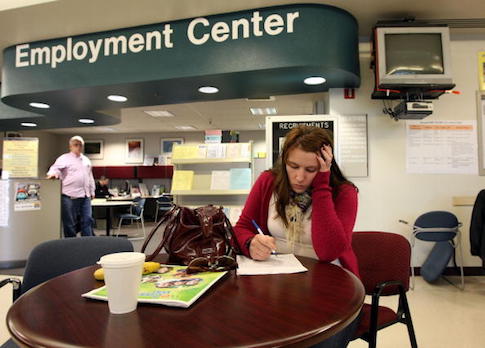Getting able-bodied adults off of welfare and back into the workforce is the focus of reforms to federal transfer programs in a bill released by the House Agriculture Committee Thursday.
"We need to begin to define success differently—not by how many people we serve, but rather how many people we aid in climbing the economic ladder," Agriculture Committee Chairman Rep. Mike Conaway (R., Texas) wrote in an op-ed in Thursday's USA Today.
About 42 million Americans benefit from the Supplemental Nutrition Assistance Program (SNAP), formerly referred to as food stamps. That includes millions who are able-bodied adults who both are not seniors and do not have young children. At the same time, unemployment has plummeted and the Federal Reserve has found that employers are still seeking more workers to fill positions.
In other words, there is a large population of welfare recipients who could be getting back to work and off the dole at the same time that the economy is prepared to accept even more workers.
The new bill proposes to simplify and expand work requirements associated with SNAP in an effort to combat this disparity. Under the current system, there are two requirements. One applies to able-bodied adults between 18 and 59, but is largely a "check-the-box" requirement that simply asks recipients to not refuse work if it becomes available to them.
The other applies to able-bodied adults without dependents (ABAWDs) between ages 18 and 49. ABAWDs, who make up about 8.8 percent of SNAP recipients, are expected to spend 80 hours a month working, looking for work, or in a training program.
The bill would abolish the ABAWD category, and instead create a unified work requirement: All able-bodied adults between the ages of 18 – 59 must work, volunteer, or participate in training for 20 hours a week. (Those caring for children under age six and pregnant women are exempted.)
Experts working for the Agriculture Committee estimated that, before waivers and exemptions are applied, between 5.5 and six million adults would be work-eligible, compared to 3.8 million ABAWDs currently in the system.
The overwhelming majority of SNAP recipients will not be affected by the new requirements. About 44 percent of recipients are children, 12 percent are over 60, and 9 percent have disabilities; in other words, around 2/3rds of recipients, those who are truly needy, will still not be required to work.
Work requirements for welfare are overwhelmingly popular, even with the poorest of Americans, according to a 2016 survey conducted jointly by the Los Angeles Times and the American Enterprise Institute. Eighty-seven percent of those surveyed supported requirements, including 81 percent of individuals identified as living in poverty.
To further help Americans get back to work, the committee is proposing to put serious financial muscle behind jobs training. That will be done through the SNAP Employment and Training (E&T) program, which provides skills training and work opportunity to SNAP beneficiaries. After a two-year phase-in period, the bill calls for allocating a billion dollars a year to the program. States will also be given more options in the kinds of programs that can be implemented through E&T.
The motivation for SNAP reform is driven in part by the ballooning of its beneficiary population. In the years leading up to the Great Recession, the average number of SNAP participants rose compared to historical standards, but slowly, reaching just over 26 million in 2007. As the economy took a plunge, however, federal welfare rolls swelled, rising to 47 million by 2013.
"What happened is, the emergency measures that were put in place during the Great Recession proved to be pretty sticky, and kept people in the program even after the economy improved and you would have expected to see those numbers go down," explained Kristina Rasmussen, vice president of federal affairs at the Foundation for Government Accountability.
What that means is that, even as unemployment rates hit record lows, the welfare rolls have remained filled. This problem is exacerbated by state ABAWD waivers, which states can receive if unemployment is high or the number of jobs available is low. As of 2018, nine states had full waivers and 27 had waivers for parts of the state. These waivers, Rasmussen explained, were extended in part because of states gaming the system.
"[SNAP enrollment] was sticky in part because a number of loopholes were created to incentivize states to waive the work requirement for able-bodied adults without kids," she explained.
House committee experts expect that the reforms to the waiver system included in the new bill will reduce the number of individuals exempted by waivers by about 60 percent.
The new bill is part of a broader federal push to reform welfare through expanded work requirements. President Donald Trump signed an executive order on Tuesday instructing his cabinet secretaries to begin exploring ways to expand work requirements.
The Trump administration has also been working to help states implement work requirements in their state Medicaid programs, a policy states like Kentucky, Indiana, and Arkansas have implemented.
